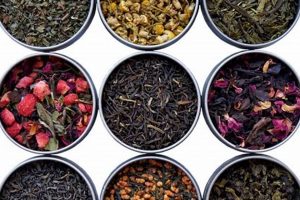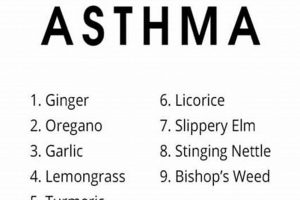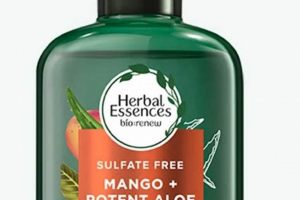The optimal chromatic selection for a retail establishment specializing in botanicals involves careful consideration of customer psychology and brand identity. Certain hues can evoke feelings of tranquility, health, and naturalness, while others may create a sense of unease or disconnect. An example would be the deliberate use of earthy tones in conjunction with verdant accents to communicate the essence of the products offered.
Strategic utilization of the visible spectrum in store design is vital for attracting target demographics and fostering a comfortable, inviting atmosphere. The skillful employment of color has demonstrably influenced consumer behavior throughout the history of retail, with studies consistently showing a direct correlation between the aesthetic environment and purchasing decisions. A welcoming ambiance, cultivated through considered color choices, enhances the overall customer experience, contributing to increased sales and brand loyalty.
Therefore, subsequent sections will delve into specific palettes and their associated psychological impacts, explore effective color combinations for botanical retailers, and provide practical guidance for implementation in various store layouts and branding materials.
Optimizing Visual Appeal
The following guidelines provide actionable recommendations for selecting the most appropriate color schemes to enhance the appeal and effectiveness of retail spaces specializing in herbal products.
Tip 1: Embrace Earth Tones: Employ a foundation of browns, beiges, and greens. These colors resonate with nature, providing a sense of grounding and authenticity, critical for establishing trust with consumers seeking natural remedies.
Tip 2: Incorporate Subdued Greens: Utilize soft, muted greens as accent colors. Overly vibrant greens can appear artificial, while subtler shades evoke feelings of vitality and well-being without seeming overly manufactured.
Tip 3: Introduce Natural Wood Accents: Integrate natural wood elements into the design. The warm tones and textures of wood complement the earthy color palette and further reinforce the connection to natural origins.
Tip 4: Leverage the Power of White: Use white judiciously to create a sense of cleanliness and spaciousness. White backdrops can highlight the natural colors of the herbal products on display, making them appear more appealing.
Tip 5: Consider Regional Variations: Tailor the color scheme to the specific cultural context. For example, brighter colors may be more acceptable in some regions, while more muted tones may be preferred in others.
Tip 6: Test Color Palettes: Before committing to a specific scheme, conduct A/B testing with potential customers. Gather feedback on different color combinations to determine which resonate most effectively with the target audience.
Tip 7: Maintain Consistency: Ensure consistent application of the chosen color palette across all branding materials, including signage, packaging, and online presence. This consistency strengthens brand recognition and reinforces the desired message.
By implementing these color selection guidelines, establishments can create inviting and effective retail environments that resonate with consumers seeking natural herbal solutions.
The subsequent sections will explore the application of these principles in specific retail settings and provide practical advice on addressing common challenges.
1. Earthy tones
The integration of “Earthy tones” into the design of retail spaces dedicated to herbal products represents a strategic application of color psychology. Their inherent association with nature cultivates a specific atmosphere conducive to attracting and engaging the target demographic.
- Establishing Authenticity
The deliberate use of brown, beige, and ochre shades directly communicates authenticity and natural origins. These hues, reminiscent of soil, bark, and unrefined materials, instill confidence in consumers seeking genuine herbal remedies. A shop predominantly featuring these colors suggests a commitment to natural sourcing and traditional practices, reinforcing the perception of product integrity.
- Creating a Sense of Calm
Earthy tones possess inherent qualities that promote relaxation and tranquility. Unlike brighter or more vibrant colors that can stimulate or agitate, these muted hues create a calming environment. This atmosphere is particularly beneficial in a retail setting where customers are often seeking solutions to health and wellness concerns, providing a space for considered decision-making.
- Enhancing Product Visibility
The neutral backdrop provided by earthy tones allows the natural colors and textures of the herbal products themselves to stand out. Greens, yellows, and reds within the products are visually amplified against a background of browns and beiges. This contrast draws the eye and focuses attention on the merchandise, increasing the likelihood of customer engagement and purchase.
- Supporting Brand Identity
Earthy tones can be instrumental in shaping a cohesive brand identity for an herbal shop. Consistency in color application across all visual elements, from store interiors to packaging and marketing materials, reinforces the brand’s association with nature, health, and well-being. This consistent visual messaging fosters brand recognition and strengthens customer loyalty.
In summary, the intentional incorporation of earthy tones into the design strategy of an herbal retail environment serves a multifaceted purpose. It not only enhances the aesthetic appeal of the space but also actively contributes to establishing brand authenticity, fostering a sense of calm, optimizing product visibility, and solidifying the overall brand identity.
2. Subdued greens
The incorporation of subdued greens into the chromatic design of a retail space specializing in herbal products is a considered decision with significant implications for customer perception and overall ambiance. Subdued greens offer a balance between the vitality of brighter shades and the neutrality of earth tones, carefully influencing the customer experience.
- Evoking Natural Harmony
Subdued greens subtly reflect the natural world without overwhelming the visual senses. These hues, such as sage, olive, and muted forest green, mirror the colors of foliage in a temperate environment. This fosters a sense of harmony and balance, aligning the retail space with the inherent properties of the herbal products offered. The application of these shades promotes a feeling of being closer to nature, thus subtly reinforcing the products’ natural origins and benefits.
- Promoting Tranquility and Wellness
Unlike vibrant greens, which can be stimulating or even jarring, subdued greens possess a calming effect. They contribute to an atmosphere of tranquility and well-being, vital for customers seeking remedies for health concerns. Retail environments painted in these shades are likely to encourage longer browsing times and more considered purchasing decisions. The association with tranquility reinforces the idea that the herbal products can aid in relaxation and stress reduction.
- Enhancing Product Presentation
Subdued greens create a complementary backdrop that enhances the visual appeal of the herbal products. They do not compete with the natural colors and textures of the herbs, tinctures, and other items on display. These shades allow product packaging and the products themselves to stand out, drawing attention to the merchandise without overwhelming the senses. For example, golden tinctures gleam against sage green shelving, creating a visually appealing display.
- Establishing a Sophisticated Aesthetic
The careful use of subdued greens projects a sense of sophistication and understated elegance. It signals a departure from overly commercial or artificial environments, indicating a commitment to quality and naturalism. This aesthetic choice subtly conveys that the shop values natural ingredients and responsible practices. By establishing a sophisticated setting, the business cultivates a perception of higher-quality products and services.
These various facets highlight the strategic importance of selecting “Subdued greens” to create retail space that are not only aesthetically pleasing but also psychologically aligned with the product offering and the desires of the target consumer, underlining its place in the discussion of the “best color for herbal shop”.
3. Natural wood
The integration of “Natural wood” elements into a retail space, while not strictly a color, exerts a significant influence on the overall chromatic perception and contributes substantially to establishing an optimal atmosphere, thereby playing a critical role in the discussion of the “best color for herbal shop.” Its impact extends beyond mere aesthetics, permeating the psychological and emotional experience of the consumer.
- Complementing Earth Tone Palettes
Natural wood’s inherent tones harmonize seamlessly with the earthy palettes frequently employed in herbal shops. The browns, tans, and reddish hues of wood grain amplify the naturalistic ambiance and create a cohesive visual narrative. Examples include shelving units crafted from reclaimed wood, display tables featuring solid wood surfaces, and decorative accents like wooden bowls or planters. The presence of natural wood deepens the connection to the natural world, reinforcing the perception of authenticity and reinforcing the impact from “best color for herbal shop”.
- Introducing Textural Contrast
The tactile qualities of natural wood provide a welcome contrast to smooth surfaces and potentially sterile environments. The grain, knots, and variations in wood grain create visual interest and invite touch, encouraging engagement with the merchandise. Examples would be the use of wooden display stands to showcase herbal teas or balms, or the incorporation of a live-edge wood counter to add a unique and organic touch. The tactile element elevates the shopping experience beyond the purely visual.
- Conveying Sustainability and Ethical Sourcing
The choice of sustainably sourced or reclaimed wood signals a commitment to environmental responsibility and ethical practices. This resonates particularly strongly with consumers seeking natural and organic products, who are often highly attuned to environmental concerns. Examples include using wood certified by the Forest Stewardship Council (FSC) or incorporating salvaged wood from local sources. The utilization of responsibly sourced materials strengthens the brand’s image and aligns with the values of its target market.
- Adding Warmth and Character
Natural wood infuses warmth and character into a retail space, creating a more inviting and comfortable atmosphere. The organic patterns and variations inherent in wood grain prevent the space from feeling cold or clinical. Examples range from installing wood flooring or paneling to incorporating smaller wooden elements, such as picture frames or signage. This added warmth and character enhances the overall customer experience and encourages longer visits.
Ultimately, the strategic integration of natural wood elements serves as a powerful tool for enhancing the overall ambiance of an herbal retail environment. By complementing earth tone palettes, introducing textural contrast, conveying sustainability, and adding warmth, natural wood contributes significantly to creating a space that resonates with consumers seeking natural and authentic products, improving the impact by defining the “best color for herbal shop”.
4. Clean white
The judicious application of clean white within an herbal shop environment serves specific functions, contributing significantly to the overall perception and effectiveness of the space. While not necessarily a dominant hue, its presence influences how other colors are perceived and facilitates crucial aspects of the retail experience.
One primary function of clean white is the creation of visual spaciousness. In smaller shops, white walls or ceilings can mitigate feelings of claustrophobia, making the area appear larger and more inviting. This is particularly beneficial as it allows customers to browse comfortably without feeling confined. Furthermore, white provides a neutral backdrop against which herbal products, often featuring a range of natural colors and textures, can stand out. This enhances product visibility, enabling customers to more easily appreciate the nuances of the merchandise. For example, herbs displayed in clear glass jars against a white wall are more visually appealing than if the same jars were placed against a dark or cluttered background. Additionally, clean white promotes a sense of hygiene and purity. In a retail environment where health and wellness are central themes, this association is crucial. White suggests cleanliness and freedom from contaminants, reinforcing customer confidence in the quality and safety of the products offered. However, the over-reliance on white can result in a clinical and uninviting environment. Balance is therefore key. Utilizing white as an accent color, or pairing it with warmer, natural tones, can create a space that is both clean and welcoming.
In summation, clean white functions as a strategic tool within the broader color scheme of an herbal shop. It amplifies visual space, enhances product presentation, and promotes a sense of cleanliness and purity. While its effectiveness hinges on judicious application and careful integration with other design elements, the presence of clean white is undeniably beneficial in creating an optimal retail environment for herbal products, demonstrating its pertinence to identifying the “best color for herbal shop”.
5. Regional preferences
The concept of “Regional preferences” constitutes a crucial, often overlooked, factor in determining the “best color for herbal shop.” Consumer responses to specific color palettes are not universal; they are shaped by cultural background, local traditions, and environmental factors specific to each geographic region. A standardized approach to color selection, therefore, can be ineffective and may alienate potential customers.
- Cultural Significance of Colors
Different cultures ascribe varying meanings to specific colors. In some Eastern cultures, for example, red symbolizes prosperity and good fortune, whereas in some Western cultures, it can connote danger or warning. An herbal shop targeting a predominantly Asian demographic might incorporate red accents, while a shop in a Western country might avoid red or use it sparingly. The failure to acknowledge these nuances can lead to unintended negative associations and a decrease in customer engagement.
- Environmental Context and Color Perception
Geographic location influences the way colors are perceived. In regions with abundant sunlight, brighter and more saturated colors may be preferred, as they appear vibrant and cheerful. Conversely, in regions with less sunlight or frequent overcast conditions, more muted or earthy tones may be favored for their comforting and grounding qualities. The “best color for herbal shop” in a sun-drenched Mediterranean location will likely differ significantly from the optimal color scheme in a Scandinavian country characterized by long winters and limited daylight.
- Local Traditions and Aesthetic Norms
Established local traditions and aesthetic norms play a significant role in shaping consumer preferences. Certain regions may have a predilection for specific color combinations or design styles. For instance, a rural community with a strong connection to nature might favor rustic designs incorporating natural materials and earthy tones, while a cosmopolitan urban center might embrace more modern and minimalist aesthetics. Aligning the shop’s design with these established norms can foster a sense of familiarity and trust among local customers.
- Adaptation to Target Demographics within a Region
Even within a single region, demographic variations can influence color preferences. An herbal shop catering to a younger, more urban clientele may opt for a more contemporary and vibrant color palette, while a shop targeting an older, more traditional demographic might choose a more conservative and subdued color scheme. Conducting market research to understand the specific preferences of the target demographic within a given region is crucial for making informed design decisions.
In conclusion, recognizing and adapting to “Regional preferences” is indispensable for determining the “best color for herbal shop.” Ignoring these regional variations can lead to a disconnect with the target audience, while embracing them demonstrates a sensitivity to local culture and a commitment to meeting the specific needs and preferences of the community. Successful herbal retailers understand that a nuanced and localized approach to color selection is essential for creating a welcoming and effective retail environment.
6. Brand consistency
Brand consistency, in the context of an herbal shop, extends beyond merely replicating a logo across various platforms; it encompasses a unified visual language where color plays a pivotal role. The ‘best color for herbal shop’ is not a singular, static choice but rather a carefully selected palette that consistently represents the brand’s values and identity across all touchpoints, from the store’s interior to its online presence and packaging. This consistency builds brand recognition and cultivates trust. For example, if a shop emphasizes organic and sustainable practices, consistently using muted greens and browns reinforces this message. Deviations from this established palette can create confusion and weaken the brand’s impact.
The effect of brand inconsistency is demonstrably detrimental. A shop that employs earthy tones in its physical location but uses bright, artificial colors online presents a disjointed image. This inconsistency can lead customers to question the authenticity of the brand and its products. Conversely, a well-executed, consistent color strategy strengthens brand recall and conveys a sense of professionalism and reliability. Consider a hypothetical herbal tea brand: consistently using specific shades of green and brown across packaging, website, and in-store displays will reinforce its connection to natural ingredients and its overall brand image.
The understanding of brand consistency’s relationship with color is, therefore, crucial for herbal shop owners. It involves deliberate choices about color palettes and their consistent application. Challenges include maintaining this consistency across various media and ensuring that the selected colors resonate with the target audience. However, by prioritizing brand consistency, the herbal shop can create a strong and recognizable brand identity, fostering customer loyalty and contributing to long-term success. This ultimately places brand consistency as a non-negligible factor when deliberating what truly comprises the best color for herbal shop.”
Frequently Asked Questions
The following section addresses common inquiries regarding the selection of optimal color palettes for retail spaces specializing in herbal products.
Question 1: Is there a single “best” color applicable to all herbal shops?
No singular color universally suits all herbal shops. The optimal selection depends on various factors, including brand identity, target demographic, regional preferences, and the specific types of products offered. A holistic color scheme, rather than a single hue, is generally more effective.
Question 2: How significantly does color influence customer purchasing decisions?
Color demonstrably impacts purchasing decisions. Chromatic choices influence mood, perceived product quality, and brand associations. A carefully considered color palette can enhance the likelihood of a purchase, whereas an inappropriate scheme may deter customers.
Question 3: What role does natural light play in color selection for an herbal shop?
Natural light significantly alters color perception. Colors may appear different under natural daylight compared to artificial lighting. Therefore, assess color samples under the store’s actual lighting conditions to ensure accurate representation.
Question 4: Are bright colors entirely unsuitable for herbal shops?
Bright colors are not inherently unsuitable, but their application requires careful consideration. Overuse of vibrant hues can create a sense of artificiality and detract from the natural appeal of herbal products. Used judiciously as accent colors, they can add visual interest without overpowering the overall aesthetic.
Question 5: How can regional color preferences be effectively determined?
Market research is essential for understanding regional color preferences. Surveys, focus groups, and analysis of local aesthetic trends can provide valuable insights into consumer preferences within a specific geographic area.
Question 6: Is it necessary to repaint an existing herbal shop to optimize the color scheme?
A complete repainting may not always be necessary. Strategic color accents, updated signage, and redesigned displays can often significantly improve the overall aesthetic without incurring the expense of a full renovation.
Selecting the “best color for herbal shop” hinges on a comprehensive understanding of various factors and their interrelation. No single answer exists, necessitating thorough research and careful planning.
The following section will provide actionable steps for implementing the principles discussed.
Concluding Remarks
This exploration has underscored the nuanced considerations inherent in determining the optimal chromatic strategy for establishments specializing in herbal products. From the psychological impact of earth tones to the regional variations in color preferences, the “best color for herbal shop” is not a fixed entity but a contextual choice influenced by a confluence of factors. Successfully navigating these considerations requires a deliberate approach, incorporating market research, brand alignment, and a keen awareness of consumer perception.
The strategic deployment of color remains a potent tool for cultivating a retail environment that resonates with authenticity, promotes customer well-being, and ultimately enhances business success. Further research into the evolving trends in consumer psychology and regional aesthetic preferences will undoubtedly refine the understanding of optimal color strategies in the herbal retail sector. Implementing the insights provided contributes to fostering trust and enhancing customer experience.







